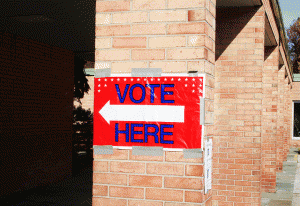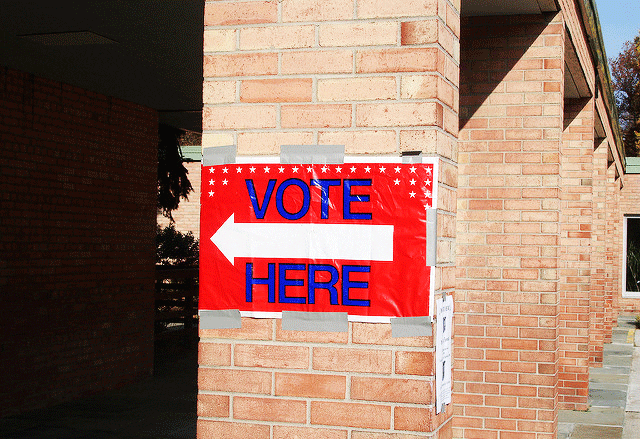
Those seeking re-election had their records closely examined and criticized based on what they had not done for housing affordability, or how their policies had fallen short in creating more housing to meet demand.
We covered elections in several cities and how affordable housing was swaying the political climate in the Fall 2017 issue of Shelterforce Magazine. Now that election season has concluded (with the exception of run-offs), here is a recap of their outcomes, and where affordable housing policy could go in those cities:
Housing 2.0
In an unsurprising outcome, democratic New York City Mayor Bill de Blasio was victorious in his bid for a second four-year term, earning nearly 65 percent of the votes. De Blasio, who campaigned on his efforts to increase affordable housing, was criticized throughout the campaign over his Housing New York plan.
De Blasio’s administration touted that of the plan’s intended goal to build or preserve 200,000 high-quality affordable units by 2024, nearly 78,000 homes had been created, preserved, or financed within three years, a record in the city’s history of affordable housing production. This put the administration two years ahead of its initial deadline. However, housing advocates claimed that de Blasio’s housing policies had, in fact, not provided housing opportunities for those with the greatest need. There has also been criticism over his rezoning policies, which allow for taller buildings and more density, and mandatory inclusionary housing that requires developers of new construction to set aside a certain number of units for permanently affordable housing.
Following his re-election win, de Blasio released details about his administration’s new ambitious and expanded Housing New York plan. Dubbed Housing New York 2.0, the administration aims to generate an additional 100,000 affordable homes over the next four years. The intended final result is 300,000 total units by 2026. The expanded plan includes:
- Creating more affordable housing for seniors by utilizing underused public lots;
- Helping New Yorkers buy a piece of their neighborhoods through new programs to construct new condos and co-ops for first-time homebuyers and help existing homeowners make repairs;
- Helping nonprofits purchase traditional rent-stabilized apartment buildings and keep them affordable to current residents; and
- Invest in modular building and micro-units to lower the cost of construction and build new homes faster.
“We still believe that de Blasio’s Housing 2.0 plan does not meet the need of the lowest-income New Yorkers,” says Katie Goldstein, executive director of Tenants & Neighbors, a grassroots organization that helps tenants preserve at-risk affordable housing and advocates for tenants’ rights. “His plan just increased the number of units from 200,000 to 300,000, but it still follows the same methodology of building higher-income housing in low-income neighborhoods, leading to gentrification and displacement.”
Changing Demographics?
In Atlanta’s mayoral race, none of its 12 candidates garnered more than 50 percent of the vote. Two women, City Councilwomen Keisha Lance Bottoms and Mary Norwood, received the most votes at 27 percent and 21 percent, respectively. The two will face off in a Dec. 5 runoff.
Race is a focus. It could be the first time in 44 years that Atlanta will elect a white mayor. Norwood is white and Bottoms is black. Though the city has become whiter and younger, African-American women represent the largest portion of super voters, described as those who have voted in at least five elections during the past four years. Women make up 58 percent of the city’s electorate.
Here is a look at each candidate’s proposals to address housing affordability:
- Protect senior homeowners.
- Reduce, freeze, or delay property taxes in impacted areas for owner-occupied dwellings.
- Work with landlords who provide low income/affordable housing to rehab and improve their properties in exchange for tax abatement.
- Work with HUD, AHA, and Invest Atlanta to create ‘stabilization’ vouchers.
- Aggressively fund/build middle-income housing.
- Use city-owned property to create low-income (30 percent AMI) housing.
- Use judicial in-rem to recycle blighted properties for affordable housing.
- Establish an Employer-Assisted Workforce Housing Program.
- Set attainable goals on the units of workforce housing built annually.
- Raise $1 billion through public-private collaboration to fight displacement.
- Establish a rental housing initiative to support the 50 percent of Atlantans who rent their homes.
- Pursue the expansion of inclusionary zoning throughout the city’s boundaries.
The Future is Female
It was a historic night in New Orleans, where City Councilwoman LaToya Cantrell became the first woman mayor in the city’s history, collecting 60 percent of the vote.
A transplant to New Orleans, Cantrell led her neighborhood Broadmoor’s recovery following the devastation of Hurricane Katrina. The city proposed razing Broadmoor, a majority Black, working-class neighborhood, and replacing it with a park after the area had been flooded by over eight feet of water. As president of the Broadmoor Improvement Association, Cantrell, along with other activists, convinced those who’d left to return and rebuild.
One of Cantrell’s priorities has been housing affordability and equity in the city. During the campaign, Cantrell said that she would implement the Smart Housing Mix, a plan that would leverage market-rate development activity to build and preserve lower-priced housing. Additional aspects of her affordable housing plan include:
- Prioritize vacant property development and increase access to capital for development.
- Incentivize landlords to moderate rents.
- Reform lien process and provide property tax relief.
- Increase enforcement of Short Term Rentals.
- Create a first-time homebuyer tax abatement program.
- Fully implement the Mow to Own program, which allows residents who live next to certain vacant lots to buy them in exchange for mowing the grass. Under Cantrell’s administration, residents would be required to maintain the lot for a year to be eligible for purchase.
Seattle also made history on election night when Jenny Durkan earned 61 percent of the vote to become the city’s first woman mayor since the 1920s. She has wasted no time since being sworn in to office on Nov. 28.
Durkan started by issuing a couple of executive orders, one of which included assisting low-income families with paying for housing. More specifically, all families on the Seattle Housing Authority waiting list without preferential status will be contacted in the first weeks of December to expedite enrollment in utility discount programs and other public benefits. A pilot Seattle Rental Housing Assistance Program will be developed by January, which will aim to provide vouchers and/or subsidies for renters on the SHA with income between 30 percent and 50 percent AMI.
One Detroit For All?
Mayor Mike Duggan won re-election with 72 percent of the vote. During the campaign, however, mayoral candidate Coleman A. Young II criticized Duggan’s leadership with claims that the economic resurgence occurring downtown and midtown has not spread out to the city’s neighborhoods, and as a result, has shut out the city’s poorest residents from feeling any sort of improvement. Duggan countered, claiming that under his administration the city has seen a return of basic services to residents, including routine trash pickup, street sweeping, and the installation of 65,000 new LED streetlights.
Regarding housing affordability, residents and activists are not convinced that Duggan is making true efforts to address the problem. Though he has previously said that he is committed to providing affordable housing, activists have not seen a plan outlining his policies. Duggan had supported an inclusionary housing ordinance that the city council passed in September, which mandates that developers who purchase discounted city-owned property set aside at least 20 percent of residential units for people earning up to 80 percent AMI.
In July, Detroit commercial real estate developer Bedrock announced that it will create or maintain about 700 affordable housing units in the greater downtown area. This is part of a larger plan to develop up to 3,500 residential rental units in the city over the next several years, according to city officials. The Detroit News reported in 2016 that Bedrock was working with Duggan’s administration on a proposed affordable housing agreement. Duggan has said that the city is committed to making sure there is room for everyone every time housing expands in the downtown and midtown areas, but skepticism remains.
CodeNext Pushback
Although Austin’s mayoral election does not take place until 2018, affordable housing is still a topic of debate and can shape next year’s elections. A potential housing solution that is sparking tense conversations is the revision of Austin’s land development code. Known as CodeNext, the land development code will determine how land can be used throughout the city. As of earlier this fall, the draft stated that more land would be open to density bonus programs that give incentives to developers to build affordable housing.
A third draft was scheduled to be released on Nov. 28, but city staff revealed in a memo that the draft will not be released until February 2018. Little has been revealed through local media regarding the delay, only that city officials have said that they want to be considerate of the feedback received on the second draft. According to the Austin Chronicle, Mayor Steve Adler said that the focus is on making sure that staff [city council] spends the time to “get it right.”
Sounds like a good plan.





Comments